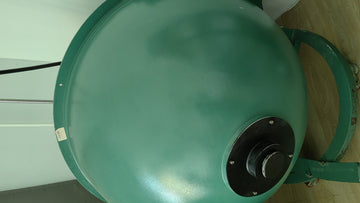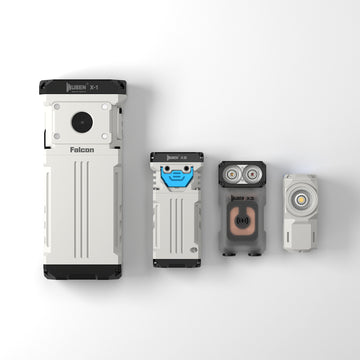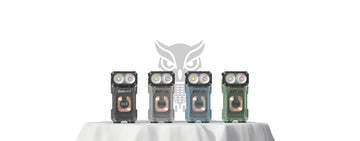
Integrating Spheres, integral components in optical instrumentation, play a critical role in achieving precise and consistent optical measurements across diverse industries. Engineered to uniformly scatter incident light on their internal surfaces, they create an environment where light intensity becomes direction-independent. This article delves into the principles, applications, and advancements of Integrating Spheres, underscoring their indispensable contributions to optical testing and performance evaluation.
Principles and Structure: At its core, an Integrating Sphere comprises a hollow spherical chamber internally coated with a highly diffuse, reflective material. This coating ensures that light undergoes multiple reflections, achieving a uniform distribution within the sphere. A light source is typically positioned at a small aperture, while strategically placed optical detectors on the sphere’s surface capture the scattered light. This design guarantees isotropic illumination, making measurements independent of the source’s emission characteristics.
Applications Across Industries: The versatility of Integrating Spheres extends across various fields, including lighting engineering, optical component testing, and material characterization. In lighting engineering, these spheres aid in assessing the uniformity and color consistency of illumination systems. For optical components, Integrating Spheres facilitates measurements of transmittance, reflectance, and scattering properties. Additionally, they play a crucial role in calibrating cameras and optical sensors, ensuring the accuracy and stability of these devices.
Performance Metrics and Standards: Key performance metrics for Integrating Spheres include diffuse reflectance, uniformity, and spectral response. Adherence to international standards, such as ISO 17025, ensures the reliability and traceability of measurements conducted with Integrating Spheres. These metrics and standards collectively establish a robust framework for quality control and standardization in optical testing.
Advancements and Future Prospects: Recent advancements in Integrating Sphere technology have focused on improving coating materials, manufacturing processes, and integration with other optical instruments. These developments aim to enhance the accuracy and efficiency of optical measurements. Looking ahead, the future of Integrating Spheres involves continual innovation to meet evolving technological demands and provide solutions for emerging challenges in optical testing.
In conclusion, Integrating Spheres stands as indispensable tools in the realm of optical measurements, offering a standardized and reproducible environment for assessing the optical properties of various systems. As technology advances, the role of Integrating Spheres will continue to evolve, shaping the landscape of optical testing and contributing to advancements in lighting, optics, and beyond.
Is the Data from Integrating Spheres Reliable?
The Integrating Sphere itself is a reliable optical testing instrument, but the reliability of its data depends on various factors, including the quality of the equipment, calibration processes, and usage methods. Here are key factors influencing the reliability of data from Integrating Spheres:Quality of Sphere Coating: The internal surface of the Integrating Sphere is typically coated with a highly diffuse, white coating to ensure uniform light scattering within the sphere. Poor coating quality may lead to uneven light scattering, affecting the accuracy of measurement results.
Sphere Size: The larger the sphere, the higher the requirement for uniform light scattering. Small spheres may face challenges in maintaining uniformity, especially when measuring large-area light sources.
Stability of Light Source: The performance of the Integrating Sphere depends on a stable light source. Fluctuations or instability in the light source may result in measurement errors.
Accuracy of Detectors: Optical detectors on the sphere’s surface must have high precision and accuracy to ensure the correct measurement of light intensity within the sphere.
Calibration Process: Regular calibration of the Integrating Sphere is a crucial step in ensuring data reliability. Calibration should adhere to international standards and be performed by experienced technicians.
Environmental Factors: Environmental conditions, such as temperature and humidity changes, can impact measurement results. Some high-precision applications may require measurements in controlled environmental conditions.
Applicability to the Use Case: Ensure that the chosen Integrating Sphere meets the specific requirements of the intended application. Different applications may necessitate different types and specifications of Integrating Spheres.
When using Integrating Spheres, users should follow the manufacturer’s provided operating manual and guidelines to ensure the most reliable measurement results. Additionally, regular maintenance and calibration are key steps in ensuring the performance of Integrating Spheres. If used correctly, Integrating Spheres can provide highly accurate and reliable optical measurement data.
The Significance of Third-Party Data Monitoring
Ensuring the accuracy and reliability of optical measurement data is crucial, and independent third-party data monitoring plays a pivotal role in achieving this goal. Third-party laboratories or organizations provide independent verification and assessment, ensuring that the performance of Integrating Sphere systems complies with standards and that the measurement results are trustworthy. This independent monitoring helps eliminate subjective influences from manufacturers or users, providing users with a more objective evaluation of the data.Potential Issues with Homemade Integrating Spheres
Compared to integrating spheres manufactured by specialized companies, data from homemade integrating spheres often tends to carry some degree of uncertainty and unreliability. Producing a high-quality integrating sphere requires a profound understanding of optical and mechanical engineering to ensure that the optical reflection and scattering processes within the sphere meet design specifications. Homemade integrating spheres may encounter the following potential issues:Uneven Optical Coating: The optical coating on homemade spheres may not be as uniform as those from professional manufacturers, resulting in uneven scattering of light within the sphere and affecting measurement accuracy.
Insufficient Manufacturing Precision: Integrating spheres demands a high level of manufacturing precision to ensure consistency in geometric shape and optical characteristics. The manufacturing process of homemade spheres may not meet these requirements.
Material Selection Challenges: Using inappropriate materials may lead to instability in optical absorption, scattering, or reflection, impacting measurement results.
Lack of Standard Calibration: Homemade spheres may not undergo standard calibration, meaning users might not ensure that the sphere’s performance aligns with international standards.
Therefore, for applications demanding high precision in data accuracy, it is advisable to choose Integrating Sphere systems manufactured by professionals and independently verified by third parties. This not only enhances the credibility of measurements but also helps reduce potential errors and uncertainties.
Tags:
Related Articles




